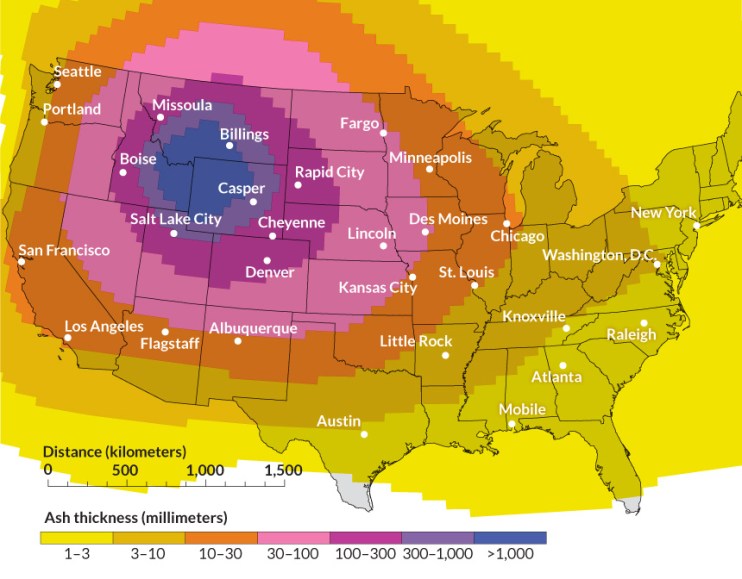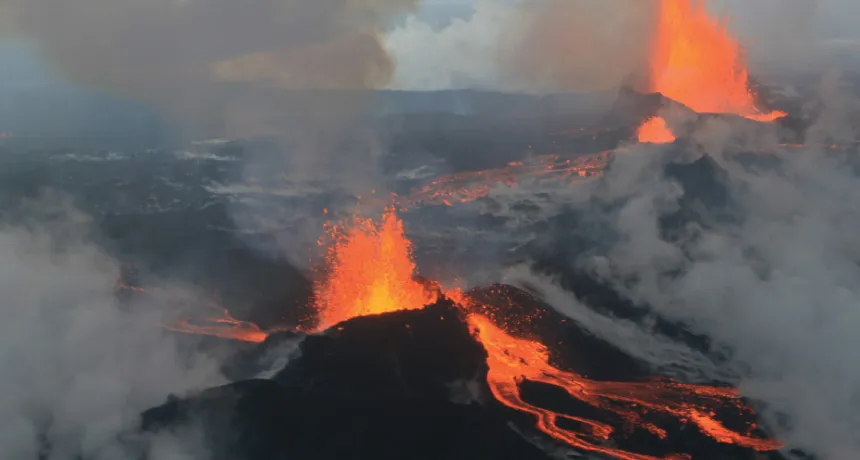Supervolcano blast would blanket U.S. in ash
Simulation of Yellowstone eruption shows extended reach of massive volcanoes

BIG BOOM A simulated Yellowstone eruption dusts North America coast to coast with 330 cubic kilometers of ash.
USGS, ADAPTED BY S. EGTS








